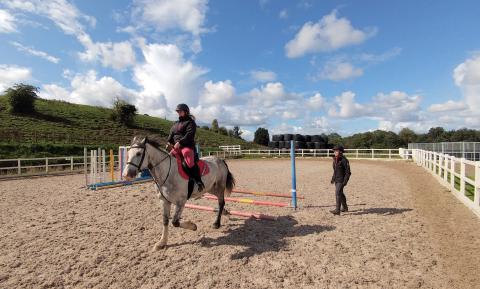Apprentice Farriers work on behalf of their Approved Training Farrier (ATF) who oversees and takes responsibility for their professional behaviour and quality of their work throughout their training.
During their training Apprentice Farriers will work under the supervision of their Approved Training Farrier to:
- Handle and restrain horses
- Check the horse's leg, foot and hoof
- Discuss and agree the horse’s shoeing requirements
- Cut away excess hoof growth and make sure the horse is balanced correctly
- Choose the most appropriate shoe for the horse relating to its size, foot condition, activity, work and working conditions
- Fit the shoe and complete any finishing off work
- Adjust the shape of the shoe if necessary using the relevant tools
- Make tools and horseshoes
- Maintain the forge and equipment.
There are around 2,500 Registered Farriers in the UK and around 300 Approved Training Farriers.
There may also be the opportunity to train as a Farrier within the Army through the Army's own specific training route.
Working Conditions
Farriery is a regulated profession by law and the Farriery Apprenticeship is the approved training route to become a Registered Farrier.
To become a Registered Farrier, you must complete a four-year and 2 month Advanced Apprenticeship with an Approved Training Farrier.
Apprentice Farriers will work alongside their ATF and their working hours vary from week to week, depending on the needs of their customers and often include weekends. They travel between different customers' workplaces, such as farms, riding stables, and livery yards, to carry out their work. A driving licence is necessary as is a vehicle suitable for carrying around a mobile workshop of stock and tools.
Farriery is hard, physical work. It involves bending, lifting and walking, and sometimes working outdoors in all weather conditions.
Salary
Salaries vary with experience, qualifications and between companies, but here's a guide to what you can expect.
£12,000
£16,000
Getting started
Relevant qualifications
As well as a genuine interest in horses, their care, behaviour and welfare, you should enjoy working for different types of customers in a variety of different locations.
To become a Registered Farrier a four-year and 2 month Advanced Apprenticeship with an Approved Training Farrier (ATF) must be completed.
Work experience or voluntary work at riding schools, stables or on a farm, is valuable, as is horse ownership and riding skills.
What experienced workers can do
- Handle and control horses and donkeys
- Assess the overall condition and footcare requirements of the horse/donkey
- Determine the footcare and shoeing plans for the horse/donkey with the owner
- Remove horseshoes and assess wear
- Trim and dress hooves
- Make and fit horseshoes
- Attach horseshoes and finish the shoeing process
- Work with veterinary surgeons and equine hospitals to provide corrective shoeing and surgical farriery.
Personal qualities you should have
- Have a genuine interest in horses and their welfare
- Good communication skills
- Good organisation skills
- Flexible and adaptable
- Self-motivated
- Be able to work alone or as part of a team.
Next steps
The success of self-employed Farriers depends on them getting enough customers for full-time work. It is also important to build a reputation based on customer satisfaction and recommendation to other horse owners.
Permanent employment may be available in larger riding schools, stables, and horse breeders. There may be promotion opportunities to Senior Farrier or to a management position. Overseas work may sometimes be available, especially within the horse breeding and racing field.
Useful links
The British Farriers & Blacksmiths Association
The Farriers Registration Council
Worshipful Company of Farriers
